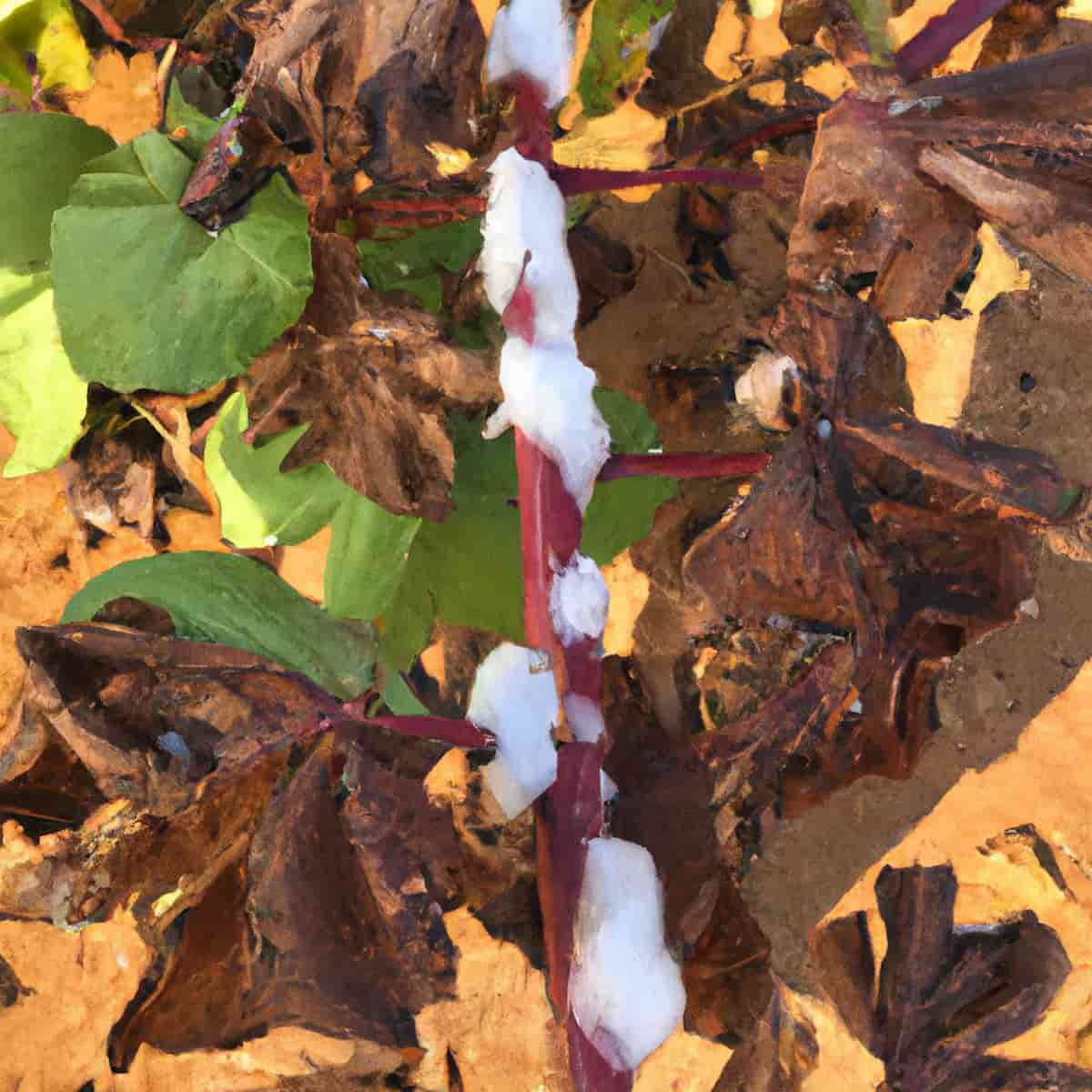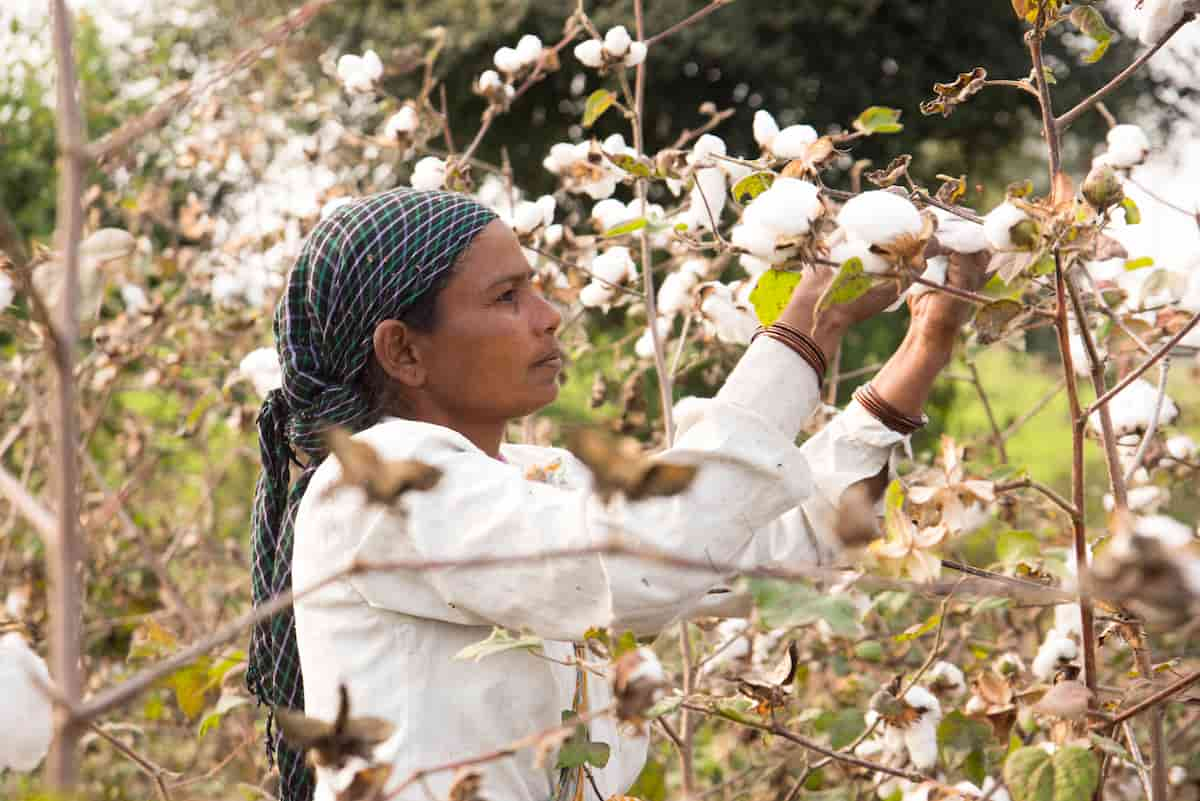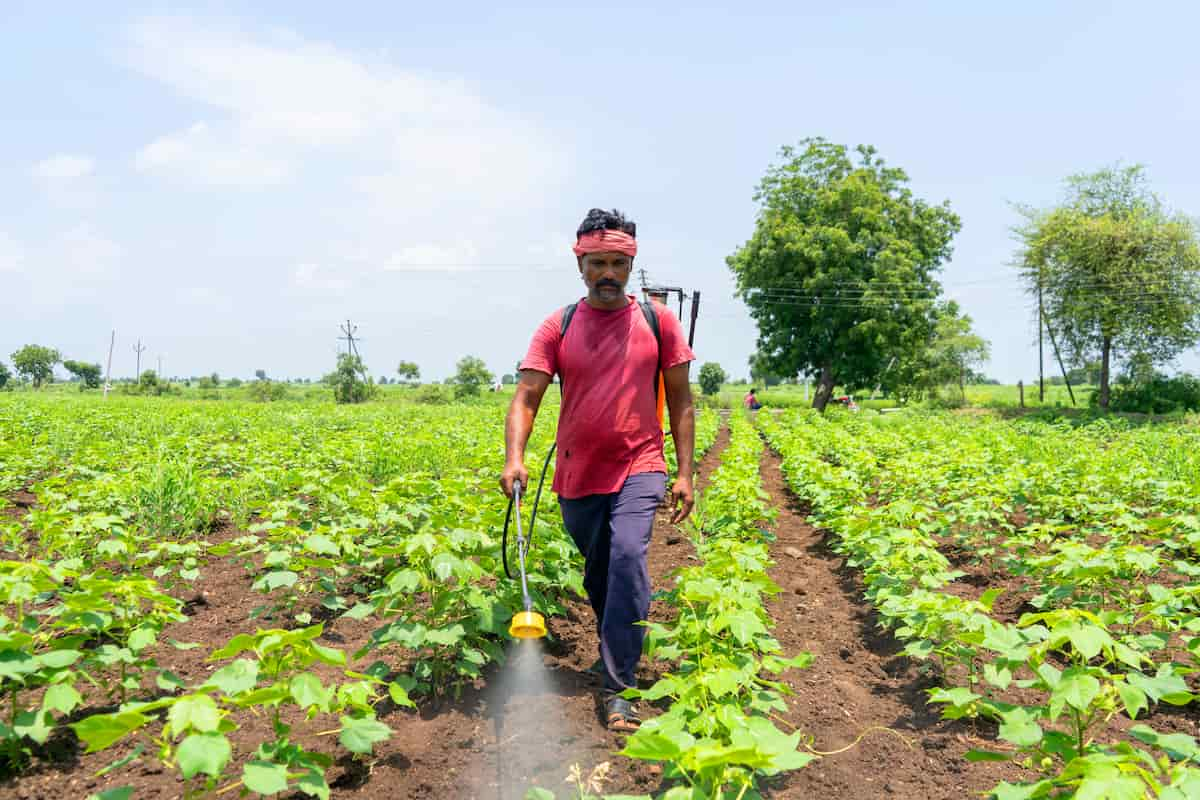Root rot is a disease affecting cotton crops that is caused by the fungal pathogen Rhizoctonia bataticola. Root rot is a soil-borne disease that attacks crop roots, causing substantial damage and death. It is widespread in moist or damp soil and can affect crops and Cotton. Slow growth, wilting leaves, early leaf loss, and branch dieback are all root rot symptoms. If the disease is not treated, it will spread and finally destroy the tree. It is critical to handle root rot as soon as possible since it can spread fast and cause severe harm.

Root Rot Disease Management in Cotton
The Causal Organism of Root Rot Disease
Root rot in Cotton is caused by the fungal pathogen Rhizoctonia bataticola (Pycnidial stage: Macrophomina phaseolina). The hyphae of this fungus are septate and reasonably thick and produce irregular, black sclerotia measuring 100 microns in diameter. These sclerotia are a key diagnostic feature for identifying the disease in affected cotton plants. The disease is particularly problematic for cotton growers, as it can lead to significant crop losses if left untreated.
Disease Cycle of Root Rot Disease
Cotton root rot disease has a soil-borne cycle in which the pathogen can survive as sclerotia in the soil for several years. The principal propagation mechanism is sclerotia dispersion, which can be transported by irrigation water, farm machinery, and other agricultural processes. When sclerotia come into touch with fresh cotton plants, they can infect the roots and spread the disease, resulting in considerable crop losses if not appropriately controlled. Understanding the disease cycle is essential for creating appropriate management methods to reduce the impact of the illness on cotton crops.
Favorable Conditions for the Spread of Root Rot Disease
- Certain environmental conditions can exacerbate the spread of dry root rot in cotton crops. Heavy rainfall followed by dry weather can create ideal conditions for the pathogen to thrive.
- High soil temperatures of 35-39°C, the cultivation of crops that are favorable hosts for the pathogen (such as vegetables, oilseeds, and legumes), and wounds caused by ash weevil grubs and nematodes.
- These factors can create an environment conducive for the pathogen to thrive and infect cotton plants, leading to crop losses.
Symptoms of Root Rot Disease in Cotton
- Root rot in cotton plants is characterized by sudden wilting of the plants, which are often scattered throughout the field.
- Affected plants appear straw-colored; in some cases, the lower leaves and stems may be brown.
- The topmost petioles and leaflets droop, and the lower portion of the tap root remains in the soil when the plant is uprooted.
- The tap root is dark, decaying, lacking lateral and fine roots, and brittle with shredded bark.
- Dark, minute sclerotial bodies can be noticed on exposed roots or inside the stem’s base. When the collar region’s dry stem is broken vertically, mycelium or sclerotia can be detected in the pith.
In case you missed it: Pink Bollworm Management in Cotton: Symptoms, Treatment, Chemical, Biological, Natural, and Organic Control

Mode of Spread/ Impact Of Root Rot Disease in Cotton
Root rot disease can severely influence cotton plants, causing shredding of the bark and discoloration of the woody sections. The bark may extend above ground level in difficult situations, turning the wood black and brittle. The infection causes a huge quantity of dark brown sclerotia on the wood and bark, aiding its spread. To reduce the burden of this illness, cotton farmers must be aware of its signs and take necessary actions to control its spread.
Root Rot Disease Management in Cotton by Cultural Methods
- Cotton root rot disease may be managed culturally by altering planting time to prevent high soil temperature conditions and intercropping with crops such as sorghum or moth bean.
- Cotton producers can reduce the danger of root rot disease and increase plant health by planting early (first week of April) or late (last week of June).
- Intercropping with other crops can also reduce soil temperature, providing an environment less conducive to the pathogen’s growth and spread.
- Deep plowing in the summer, intercropping with fenugreek, soil solarization, and chickpea production in elevated beds and furrows.
- These strategies can aid in reducing the presence of the root rot pathogen in the soil, supporting healthy plant development and lowering disease risk.
- Implementing these artistic techniques can be a cost-effective and long-term way of decreasing the impact of root rot disease in cotton production, resulting in higher yields and healthier crops.
Root Rot Disease Management in Cotton by Biological Methods
- Beneficial bacteria such as Trichoderma viride or Pseudomonas fluorescens are used in biological approaches to manage root rot disease in Cotton.
- To protect the growing plant from infection, these bacteria are administered to cotton seeds at a rate of 4g/kg or 10g/kg, respectively. Without the use of chemical pesticides, these treatments can be an effective way of decreasing the effects of root rot disease and increasing plant health.
Root Rot Disease Management In Cotton by Chemical Methods
- Cotton root rot disease can be controlled chemically by spot soaking with 0.1% Carbendazim and seed treatments with fungicides such as Tebuconazole, Carboxin+Thiram, Captan, Thiram, or Carbendazim.
- These fungicides are administered to the seeds to protect young plants from root rot before planting. Chemical treatment approaches can reduce the severity of root rot disease significantly.
In case you missed it: Spotted Bollworms Management in Cotton: Symptoms, Treatment, Chemical, Biological, Natural, and Organic Control

Preventive Measures to Control Disease in Cotton
- To prevent the spread of Root rot disease in Cotton, it’s recommended to grow varieties that are either tolerant to the fungus or drought.
- Strong-stemmed varieties that won’t dislodge easily should also be chosen. Adjust the sowing date to avoid the driest part of the growing season during the post-flowering stage.
- Wide spacing between the plants, proper irrigation to maintain soil moisture, balanced fertilization, early harvest, and deep plowing of crop residues can also help control the disease.
- For three years, crop rotation with non-host crops such as small wheat, oats, rice, barley, and rye is also effective. Soil solarization of residues after tillage may also effectively control the disease.
Conclusion
Rhizoctonia bataticola and Macrophomina phaseolina produce root rot, a soil-borne disease. Cotton disease management combines cultural measures, seed treatments, and chemical control approaches. Growing tolerant cultivars, altering sowing dates, regulating soil moisture, and thorough plowing are examples of cultural techniques.
Chemical management includes fungicide spot drenching and seed treatment with fungicides such as carbendazim, tebuconazole, and thiram. Biocontrol agents such as Trichoderma viride and Pseudomonas fluorescens are used in biological control strategies. Cotton root rot may be efficiently managed using a comprehensive strategy combining cultural, biological, and chemical techniques.
- Types of Fungicides Used in Agriculture
- Common Issues in the Fruit Development Stage of Pomegranate Farming
- Fruit Development Issues in Papaya: Easy Solutions and Treatment
- Soil-Borne Diseases and How to Protect Your Plants
- Practices to Prevent Disease Spread in the Garden
- From Wilted to Thriving: How to Treat Root Rot Naturally in Houseplants
- Natural Remedies to Cure Brown Spots on Fig Tree Leaves
- Natural Solutions for Poinsettia Problems: 100% Effective Remedies
- How to Control Calla Lily Problems: Natural Remedies for Leaf and Flower Problems